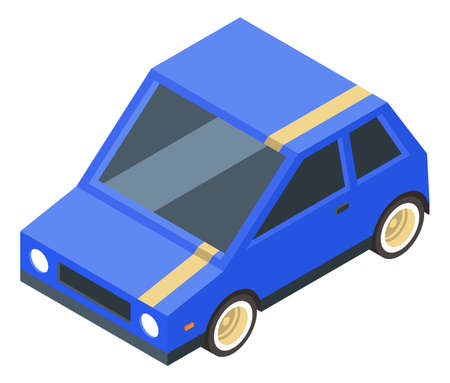Understanding Skids and Why They Happen
If you’ve ever hit a patch of ice or a slick spot after a rainstorm, you know how quickly your car can lose traction. Skids are a common hazard on American roads, especially during winter months or when there’s heavy rain. So, what exactly causes a skid? Let’s break it down. A skid happens when your tires lose their grip on the road, usually because of a slippery surface like water, snow, or even loose gravel. The science behind skids comes down to friction—the less friction between your tires and the road, the more likely you are to skid.
Types of Skids
There are several types of skids every driver should know about. Oversteer occurs when the rear wheels lose traction before the front wheels, causing the back end of your car to swing out. It’s something you might experience in rear-wheel drive cars, especially if you take a turn too fast on a wet or icy road. Understeer is the opposite—here, the front wheels lose grip first. This often happens in front-wheel-drive vehicles when you try to steer but your car keeps going straight instead of turning. And then there’s hydroplaning, which happens when your tires ride up on a layer of water and lose contact with the pavement altogether. Hydroplaning is most common during heavy rain when roads can’t drain quickly enough.
Why Skids Are So Common in America
The sheer variety of weather across the U.S.—from icy Midwest winters to sudden Southern downpours—means drivers regularly encounter conditions that make skidding more likely. Plus, wide highways and higher speed limits can tempt drivers to go faster than what’s safe for the road conditions. Understanding why skids happen and recognizing the different types can help you stay safer behind the wheel, no matter where your American road trip takes you.
2. Recognizing Slippery Conditions
Knowing when and where roads get slick is the first step to avoiding skids. In the U.S., certain conditions are notorious for causing drivers to lose traction. The table below highlights some of the most common slippery situations you might face:
| Condition | Where & When It Happens | How to Spot It |
|---|---|---|
| Rain | Anywhere; especially after a dry spell when oil surfaces mix with fresh rain | Road looks shiny or reflective; water pooling in low spots; tire spray from other vehicles |
| Snow | Northern states, mountain areas, and during winter months | Packed snow can look white or gray; sometimes hard-packed like ice; tire tracks may be visible but still slippery |
| Black Ice | Bridges, overpasses, shaded curves—especially at night or early morning in cold weather | Pavement looks wet but isn’t; surface appears glossy with little texture; temperature near or below freezing |
| Oil Spills | Intersections, gas stations, recent accident sites—most often after rain begins | Iridescent or rainbow sheen on pavement; extra slick right after rain starts due to oil rising to the surface |
Key Signs and What To Do
If you notice your wipers struggling, other vehicles kicking up lots of spray, or the road looking unusually shiny or glassy, slow down and increase your following distance. If it’s cold out, always assume bridges and shaded stretches could be icy—even if the rest of the road seems fine. Remember: black ice is nearly invisible, so trust your thermometer as much as your eyes.
Local Tips for U.S. Drivers
- If you’re driving in places like Seattle or Miami, watch out for sudden rain that makes roads ultra-slick.
- In snowy climates like Minnesota or Colorado, packed snow and melting slush can create unpredictable slick spots.
- If you’re in an area known for oil drilling or heavy truck traffic (like parts of Texas), be aware of unexpected spills—especially after a fresh rain.
Stay Alert Before Trouble Starts
The best way to avoid a skid is to recognize these hazards before they catch you off guard. Scan the road ahead, check local weather updates, and know that even if you’re experienced, no one is immune to slippery surprises on American roads.

3. Staying Calm: What to Do When You Start Skidding
When your car suddenly starts to skid, it’s easy to panic—but staying calm is the most important thing you can do. Here’s a simple, step-by-step approach for keeping your cool and getting your car back under control, tailored for everyday American drivers:
Step 1: Don’t Slam on the Brakes
Your first instinct might be to hit the brakes hard, but this can make the skid worse. Instead, take your foot off the accelerator and let your car slow down naturally.
Step 2: Steer in the Direction You Want to Go
Gently turn your steering wheel in the direction you want the front of your car to go. If your rear wheels are sliding left, steer left; if they’re sliding right, steer right. This is often called “steering into the skid.”
Step 3: Look Where You Want to End Up
Focus your eyes on where you want the car to go, not on what you’re trying to avoid. Your hands tend to follow your line of sight, helping you steer more effectively.
Step 4: Avoid Overcorrecting
Make small, gentle adjustments with the steering wheel. Jerking the wheel or overcorrecting can cause you to lose even more control.
If You Have Anti-Lock Brakes (ABS)
If your vehicle is equipped with ABS, press firmly on the brake pedal and let the system do its job. You might feel pulsing—that’s normal and means ABS is working.
If You Don’t Have ABS
Pump the brakes gently if you need to slow down further, but keep your focus on steering and regaining traction.
Quick Tip: Breathe!
Remember to breathe deeply and stay as relaxed as possible. Panicking will only make things harder, but taking a deep breath can help you think clearly and react appropriately.
4. Correcting a Skid: Step-by-Step Recovery Techniques
When your car starts to skid on a slippery road, staying calm and reacting correctly can make all the difference. The right response depends on the type of skid (front-wheel, rear-wheel, or all-wheel drive) and the direction you’re sliding. Here’s a step-by-step guide to regaining control safely:
Understanding the Type of Skid
First, identify whether you’re experiencing a front-wheel (understeer) or rear-wheel (oversteer) skid. Here’s how you can tell:
| Type of Skid | What Happens? | Common Cause |
|---|---|---|
| Front-Wheel (Understeer) | The car continues straight even though you’re turning the wheel. | Too much speed into a turn or braking hard while turning. |
| Rear-Wheel (Oversteer) | The back of your car slides out to one side. | Accelerating or braking too hard while turning. |
Step-by-Step Skid Recovery Techniques
If You Have Front-Wheel Drive (Most Modern Cars)
- Ease off the gas pedal.
- Steer gently in the direction you want to go.
- If needed, shift to neutral but do not slam on the brakes.
- As traction returns, straighten your steering wheel and gently accelerate.
If You Have Rear-Wheel Drive
- Take your foot off the accelerator.
- Turn your steering wheel in the direction you want the front wheels to go.
- If your rear wheels are sliding left, steer left; if right, steer right.
- Avoid overcorrecting—small adjustments are best.
- If you need to brake, do so gently and only if your car has anti-lock brakes (ABS).
If You Have All-Wheel Drive
- Treat it like front- or rear-wheel skids, depending on where you feel the slide start.
- Ease off the gas and steer gently toward your intended path.
- The system may help regain traction faster, but do not rely solely on technology—your inputs matter!
Braking Tips for Every Situation
- If your vehicle has ABS, press the brake pedal firmly and steadily—do not pump the brakes.
- If you do not have ABS, pump the brakes lightly to avoid locking up your wheels.
- Avoid sudden braking or acceleration until full control is regained.
Quick Reference Table: What To Do in Each Skid Situation
| Drive Type | Gas Pedal | Steering | Braking Advice |
|---|---|---|---|
| Front-Wheel Drive | Ease off slowly | Toward desired path | No sudden braking; use neutral if needed |
| Rear-Wheel Drive | Liftoff immediately | Toward slide direction first, then correct | Pump brakes if no ABS; steady pressure with ABS |
| All-Wheel Drive | Liftoff smoothly | Toward intended path with gentle corrections | Use ABS features as designed; no sudden moves |
Remember: Practice makes perfect. If possible, consider taking a winter driving course or practicing skid recovery in a safe, controlled environment. Staying cool and responding properly can keep you—and everyone else on the road—much safer when conditions get slick.
5. Safety First: Preventing Skids Before They Start
When it comes to driving in slippery conditions, prevention is always better than cure. Before you even hit the road, there are practical steps you can take to reduce your chances of skidding—many of which are especially relevant for U.S. drivers who face everything from icy Midwest highways to rainy Pacific Northwest streets. Let’s break down some key habits you should adopt year-round.
Check Your Tires Regularly
Your tires are your first line of defense against losing traction. In the U.S., tire tread depth is crucial, especially during winter or heavy rain seasons. Make it a habit to check your tire pressure and tread depth monthly. If you live in a snowy state, consider switching to dedicated winter tires—they really make a difference when roads are slick.
Slow Down When Conditions Are Poor
This one sounds simple, but it’s often ignored. Speed limits are set for ideal conditions; when roads are wet or icy, slow down significantly—even if it means driving below the posted limit. Give yourself more time to react, especially on highways where speeds are typically higher.
Maintain Extra Space Between Vehicles
On American roads, tailgating is a recipe for disaster in bad weather. The general rule of thumb is the “three-second rule” for following distance in good conditions—double or even triple that when roads are slippery. This extra space gives you more room to brake gently and avoid sudden maneuvers that could cause a skid.
Avoid Sudden Movements
Sharp turns and quick stops can easily lead to skids on wet or icy pavement. Try to accelerate, brake, and steer smoothly and gradually. If you see trouble up ahead, ease off the gas early rather than slamming on the brakes at the last minute.
Don’t Use Cruise Control on Slippery Roads
Many American drivers love cruise control for long stretches of highway, but using it in rain, ice, or snow can be risky. It may cause your car to accelerate unexpectedly if you lose traction, making a skid more likely and harder to recover from.
By building these habits into your everyday driving routine—whether you’re commuting in Chicago snow or navigating Seattle’s rain—you’ll drastically reduce your risk of skidding and keep yourself and everyone around you safer on the road.
6. What to Do Afterwards: Assessing Damage and Next Steps
Regaining control of your vehicle after a skid is a huge relief, but it’s not the end of the story. The next steps are just as important for your safety and the well-being of your car. Here’s what you should do right after you’ve come out of a skid on slippery roads:
Pull Over Safely
If you can, signal and carefully pull over to the side of the road or into a parking lot. Choose a spot where you’re visible to other drivers and away from traffic. Turn on your hazard lights so others know you may need help or time to regroup.
Check Your Vehicle for Damage
Even if you didn’t hit anything, skidding can sometimes cause hidden damage—especially to your tires, wheels, or suspension. Step out (only if it’s safe) and look for obvious issues like flat tires, leaking fluids, or anything hanging underneath your car. If you did bump into a curb or guardrail, check for dents or scrapes too.
Listen and Feel for Problems
When you get back in, pay close attention to how your car sounds and feels as you start driving again. Any odd noises, shaking, or warning lights on your dashboard could signal problems that need professional attention.
Decide If You Need Roadside Assistance
If your car isn’t driving normally or you notice significant damage, don’t risk getting back on the road. Call for roadside assistance—most insurance plans offer this, or you can use services like AAA. They can help with towing, tire changes, or even minor repairs on the spot.
Pro Tip: Document Everything
If there was any impact or damage, take photos with your phone and jot down notes about what happened. This information is helpful if you need to file an insurance claim later.
Stay Calm and Be Prepared
Finally, take a moment to calm your nerves before driving off again. Skids can be stressful! Remember, being prepared with knowledge and knowing what steps to take after an incident will help keep you and others safe on the road.


